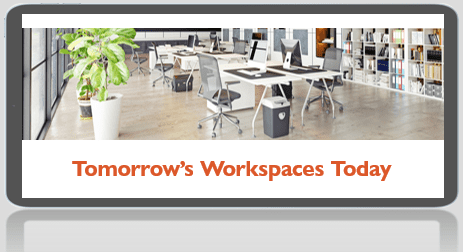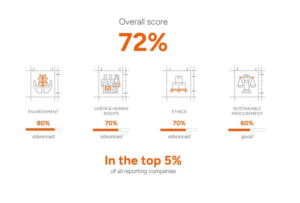How to successfully hit your office relocation budget
Managing an office relocation service without overspending can be a real challenge. Due to their complexity, office moves can be a nightmare to project manage and even harder to accurately budget for, especially given the hidden costs that can arise out of the blue.
Every stage of relocation can pose problems – even for the most experienced of facilities managers. Despite that, there are great opportunities to cleverly reduce your spend whilst still delivering a high-quality work environment for your colleagues. Here are a few clever tricks you can use to deliver a seamless office move for less.

Scope out the move
Accurately budgeting a commercial relocation is really challenging. Without a wealth of experience or in-depth knowledge on the subject of commercial relocations, it can be hard to put together a budget without help. Gaining holistic knowledge of every activity involved in the move provides a firm basis to put together a more accurate budget.
To start, you should ask yourself:
- How many staff are moving?
- What operations need to be maintained during the move?
- What equipment, files and furniture need relocating?
- What will you do with what’s left behind?
- Are there any restrictions that will influence the move programme?
- When does each moving phase need to be completed?
- What will you need to do to clear and reinstate the old office?
- Can you comfortably manage the project yourself?
Addressing these questions will allow you to think through each facet of your project, this serves as the basis for a formal commercial relocation project plan, which is the most important process in the entirety of the project. A comprehensive plan may be the difference between hitting your budget and wildly overspending.
How to Project Manage an Office Move
Planning is an absolutely essential component of a successful commercial relocation project.
Not only does it enable you to forecast your costs accurately, but it also allows you to consider potential cost-saving activities and minimises any costly disruptions. The earlier you begin activity planning, the better. You should also seek to involve any commercial relocation services vendors at the earliest possible stage to ensure your move is delivered on time and within budget.
However, planning for these projects can prove difficult without previous experience of a commercial relocation project. Even for experienced FMs in the field of relocations, new circumstances can produce different challenges in the project. To construct a comprehensive commercial relocation project plan, you should:
- List all stakeholders involved – reviewing their needs and conditions of the project will play a pivotal role in the running of the project
- Note the constraints – anything that impacts any phase of your move should be formally noted
- Plan for contingencies – disruptions to a commercial relocation project are inevitable, so noting several options should these arise will be highly beneficial
- Phase activities in your project timeline – phasing allows you to create a ‘buffer’ for overrunning activities, reducing the dependencies on activities to be completed on time
It may be helpful to talk to your relocation services partner about the move management services they provide to support your move management process.
Remanufacture, rather than dispose
Again and again, office furniture and equipment proves to be one of the most considerable expenses of a commercial relocation project. Even for smaller moves, the costs of buying new equipment and furniture can quickly rack up. If you are moving more people and disposing of your old furniture, costs can quickly spiral.
Disposing and purchasing brand new equipment can take up a significant portion of your budget. Many facilities managers opt to relocate furniture to save money, even if it is not entirely fit for purpose or in second-rate condition. But this doesn’t have to be the case – office furniture remanufacturing – can be a great way to utilise existing furniture assets and remove the need to buy entirely new furniture for your new location. Specialist remanufacturing facilities can remanufacture or refurbish your furniture, or sell you already refurbished or remanufactured quality furniture, at a fraction of the cost of brand new furniture.
This can save you thousands of pounds whilst ensuring your furniture fits your new location, is in good as new condition and gives a modern new look to your office.
Resell redundant equipment
If you do opt for new furniture, there are ways to recover some funds from your redundant furniture leftover whilst avoiding the cost and environmental impact of sending it to landfill. If it’s still in good condition, with some sales and marketing assistance, you can sell it and recover some of your outlay.
This can be a time-consuming process which is why many facilities managers avoid reselling redundant IT equipment altogether. However, some integrated services providers can provide the marketing and sales support needed to resell unwanted office furniture and IT equipment without it affecting your relocation timeframes or creating additional workload for you and your team.
Future-proof your office space
Due to the huge costs and aggravation involved, relocating offices tends to be a decision forced by need rather than want. Moves are generally a reflection of the business strategy, be that downsizing to make things more efficient, upsizing to cater for growth, or simply moving geographical location for a competitive advantage.
Future planning will help you save costs in the long-run, so it may be useful to fit your office with a 5-10% increase in size in mind. This will prevent you from undertaking one-off projects that could cost more, a few months or years down the road.
Score a quick CSR win
Donating unused but good quality furniture is a great way to score a quick corporate social responsibility (CSR) win, strengthen your company’s corporate image and it is the right thing to do. Initiatives like The Giving Back Project help FMs to donate unwanted furniture IT and electrical equipment (which would otherwise go to waste) to charities, social enterprises and schools helping disadvantaged people and others in need.

Reduce waste
The costs of sending equipment to landfill are continually rising, providing a stick rather than a carrot for companies to go green and reduce their wastage – but when relocation projects create so much waste, the most affordable option is to reduce that waste and minimise disposal costs, ensuring that items that cannot be reused are recycled wherever possible.
Conclusion
Planning your project in advance and seeking outside assistance at the earliest stages will get you on the right track to deliver a cost-effective relocation project with no compromises on delivery. With a plan in place from the beginning, you can start to explore ways to reduce waste and complete the project within budget.
There are many components to a successful move, from picking the best office relocation company to exploring which services are available may help you get even more from your budget. Integrated service providers are often able to deliver cost advantages throughout the entire process, and save you the aggravation of managing a multitude of providers.
If you’re in the process of budgeting your office relocation cost – or are looking for ways to reduce your spend – get in touch with one of our relocation specialists today.
Related stories
In this blog, we delve into workplace consultancy, exploring the intricacies of workplace change and space utilisation strategies and their profound implications for businesses.
Sustainability remains a top business priority for Crown in the UK & Ireland and globally; we are therefore delighted to have launched our 2023 UKI Sustainability Report!
Crown are delighted to announce that we have been awarded Gold by EcoVadis in 2024 for the second time, reflecting our commitment to and progress in becoming a responsible business.




















